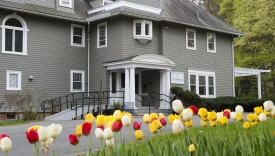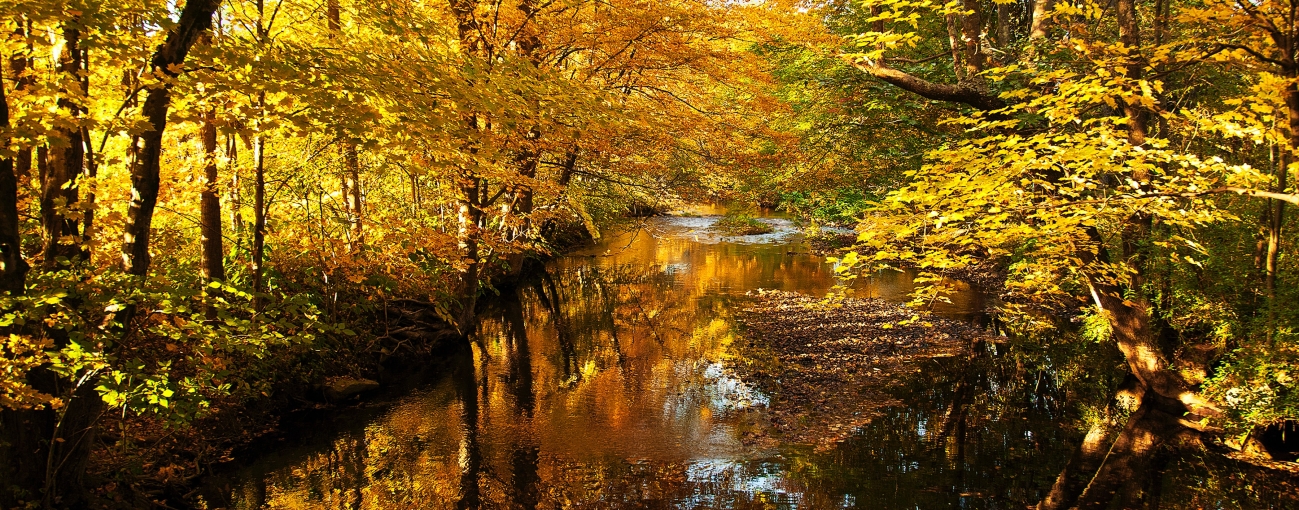
Land Acknowledgements
Information, resources, and links regarding land acknowledgements for the Five College campuses.
Land acknowledgements, as described below, are not formulaic scripts to be recited, but rather sincere expressions of recognition and respect that call for reflection and action. We invite you to explore the resources on this page to learn more.
Land Acknowledgements: Meaning and Purpose
“A Land Acknowledgement is a formal statement that recognizes and respects Indigenous Peoples as traditional stewards of this land and the enduring relationship that exists between Indigenous Peoples and their traditional territories.”
From UMass
“To recognize the land is an expression of gratitude and appreciation to those whose territory you reside on, and a way of honouring the Indigenous people who have been living and working on the land from time immemorial. It is important to understand the long standing history that has brought you to reside on the land, and to seek to understand your place within that history. Land acknowledgements do not exist in a past tense, or historical context: colonialism is a current ongoing process, and we need to build our mindfulness of our present participation. It is also worth noting that acknowledging the land is Indigenous protocol.”
From Know the Land Territories Campaign
“Land acknowledgment is a traditional custom that dates back centuries in many Native nations and communities. Today, land acknowledgments are used by Native Peoples and non-Natives to recognize Indigenous Peoples who are the original stewards of the lands on which we now live….
"After millennia of Native history, and centuries of displacement and dispossession, acknowledging original Indigenous inhabitants is complex. Many places in the Americas have been home to different Native Nations over time, and many Indigenous people no longer live on lands to which they have ancestral ties. Even so, Native Nations, communities, families, and individuals today sustain their sense of belonging to ancestral homelands and protect these connections through Indigenous languages, oral traditions, ceremonies, and other forms of cultural expression….
"Making a land acknowledgment should be motivated by genuine respect and support for Native Peoples. Speaking and hearing words of recognition is an important step in creating collaborative, accountable, continuous, and respectful relationships with Indigenous nations and communities.”
From the National Museum of the American Indian
“Land acknowledgment alone is not enough. It’s merely a starting point. Ask yourself: how do I plan to take action to support Indigenous communities?”
From Nativegov.org
Campus Land Acknowledgements
Most Five College events take place on our member campuses, on the ancestral lands of the Nonotuck and Pocumtuc peoples. Community members and hosts are encouraged to refer to the land acknowledgement practices relevant to their gatherings. Below are the land acknowledgements of Mount Holyoke College, Smith College, and UMass Amherst. Click on each of the links to find additional information relating to land acknowledgement language and policies on those campuses. Hampshire College and Amherst College are each developing their own land acknowledgements and they will be included here when they are available.
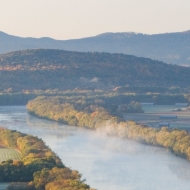
Mount Holyoke College
Mount Holyoke College is located in Western Massachusetts on the ancestral land of the Nonotuck people. It is also important to acknowledge the neighboring Indigenous nations who continue to be connected to this land: the Nipmuc and the Wampanoag to the East, the Mohegan and Pequot to the South, the Mohican to the West and the Abenaki to the North.
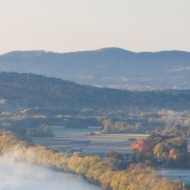
Smith College
Smith College acknowledges and appreciates that the space in which we gather today is built within Nonotuck ancestral homelands. We recognize our present-day neighboring Indigenous nations: the Nipmuc and the Wampanoag to the East, the Mohegan, Pequot, and Narragansett to the South, the Mohican and Mohawk to the West, and the Abenaki to the North. Finally, we acknowledge and celebrate the presence of Indigenous people here among us today.
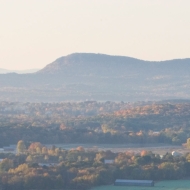
UMass Amherst
The University of Massachusetts Amherst acknowledges that it was founded and built on the unceded homelands of the Pocumtuc Nation on the land of the Norrwutuck community.
We begin with gratitude for nearby waters and lands. We recognize these lands and waters as important Relations with which we are all interconnected and depend on to sustain life and wellbeing. The Pocumtuc had connections with these lands for millennia. Over 400 years of colonization, when Pocumtuc Peoples were displaced, many joined their Algonquian relatives to the east, south, west and north. That includes Mashpee and Aquinnah Wampanoag, Nipmuc, Narragansett, Mohegan, Pequot, Mohican, communities and Abenaki and other nations of the Wabanaki Confederacy. These Native peoples still maintain connections and relationships of care for these lands today. We also acknowledge that the University of Massachusetts Amherst is a Land Grant University. As part of the Morrill Land Grant Act, portions of land from 82 Native Nations west of the Mississippi were sold to provide the resources to found and build this university.
As an active first step toward decolonization, we encourage you to learn more about the Native Nations whose homelands UMass Amherst now resides on and the Indigenous homelands on which you live and work. We also invite you to deepen your relationship to these living lands and waters.
Resources for Education and Action*
As noted above, land acknowledgements become more meaningful when they are accompanied by action. The resources below are intended to facilitate continuing education about the origins and evolution of land acknowledgements. Additional resources on the Native peoples of our region (today and in the past) and the history and continuing legacy of colonization may be found on our Native American and Indigenous Studies (NAIS) program web pages.
- Are you planning to do a Land Acknowledgement?
- Land Acknowledgements - Massachusetts Policy Collection
- A guide to Indigenous land acknowledgment - Native Governance Center
- Tribal Land Acknowledgements - What they Are and Why We Need to Do Them — Embracing Equity
- Honoring Original Indigenous Inhabitants: Land Acknowledgment | Helpful Handout Educator Resource
- Land Acknowledgment: Native American and Indigenous Initiatives - Northwestern University
- Tomaquag Museum A Guide for Land Acknowledgements by Lorén Spears
- Know the Land — Laurier Students' Public Interest Research Group
- Territory Acknowledgement - Native-Land.ca
- Native-Land.ca
- Land acknowledgements are about better relations, not just checking a box
- 'I regret it': Hayden King on writing Ryerson University's territorial acknowledgement | CBC Radio
- Indigenous land acknowledgments alone won't advance reconciliation, say critics | CBC News
- Beyond territorial acknowledgments – âpihtawikosisân
- 'There is no DNA test to prove you're Native American' | New Scientist
Please send suggestions for additional resources to fci-strategicengagement@fivecolleges.edu.
*Note that FCI is a 501(c)(3) organization, which can engage in advocacy, but not lobbying.
Photo credits: top photo: western Massachusetts, by Jack Prichett. Other photos: the Connecticut River Valley, by Danita Delimont.

